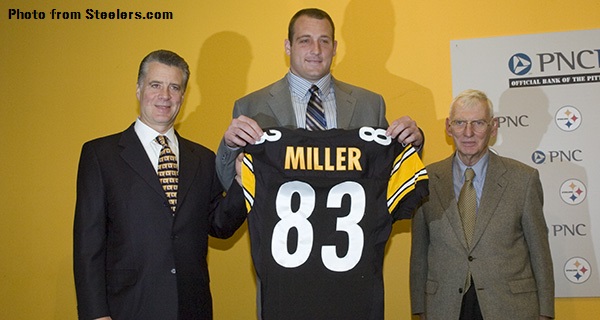On the heels of the conclusion of the 2015 NFL Draft, I began to realize the need to enhance my understanding of each team’s draft history; what they’ve built or attempted to build over the past ten years and how they’ve went about that process.
This may seem tedious to you, the reader, but I think as analysts of a great game, it can be hard to criticize or praise a team without understanding the full context of how their roster and positional depth has been constructed. For example, the New York Jets and the Buffalo Bills are often ridiculed heavily for their drafting incompetence at the quarterback position, but while often grouped together, a review of their past 16 classes suggest two vastly different front office mindsets. The Jets have spent an incredible 12 picks on quarterbacks (by far the most in the AFC), while the Bills have used just four selections on signal callers over the same time period. So two teams that have had similar results at the quarterback position since 2000, but have attempted to address those issues in vastly different ways.
Similar comparisons can be made in the AFC North, a process which we began to endeavor upon with an examination of each team’s offensive and defensive draft classes over the past ten years. Today we will look at all four team’s selections from 2006-2015 at tight end, before moving on to the offensive line tomorrow.
Tight Ends
Baltimore Ravens: 7
Cincinnati Bengals: 7
Pittsburgh Steelers: 6
Cleveland Browns: 5
The Ravens have long-prioritized the tight end position more than most NFL teams, and while they haven’t used a first rounder to address the spot since Todd Heap in 2001, the team has spent plenty of mid-round selections trying to find playmakers at the position. The urgency to find Joe Flacco a quality tight end in the draft has certainly grown over the past two years, as third rounder Crockett Gilmore and this year’s second rounder Maxx Williams both have potential to be potent playmakers in the Ravens offense. That said, the present day returns on the Ravens tight end investments are pretty ugly, although Dennis Pitta did look like a future stud before injuries derailed his career. The team has always found a way at the position, but athletic additions like Williams and Gilmore could really open up the passing game in a new way for Flacco this season.
Few NFL teams are as in love with the tight end position as Cincinnati, and just as few are worse when it comes to drafting it, as the Bengals have really struggled to find the playmakers they envision during the pre-draft process. The only AFC North team to spend a first rounder on the position in the past ten years, the Bengals have actually spent TWO first rounders on tight ends, bringing in Jermaine Gresham in 2010 and Tyler Eifert in 2013. Despite a plethora of chances to become a star in Cincinnati’s offense, Gresham has been extraordinarily ordinary, while Eifert’s development has been stunted due to injuries. A third and fourth rounder in Chase Coffman and Orson Charles have bombed disastrously, combining for just 19 catches in their careers. The team can only hope that recent investments Tyler Kroft and C.J. Uzomah experience more success as they begin their NFL tenures.
The Steelers have stood pat at the tight end position over the years for the most part, featuring Heath Miller and Matt Spaeth as their top two options, save for a two-year gap when Spaeth was in Chicago before he returned to Pittsburgh. The big third rounder is the Steelers only 1st-4th round selection at the tight end position since Miller in the first round in 2005, and while Spaeth has never developed into much of a receiver, he’s been an effective blocker throughout his career. Few NFL teams have invested as little in the tight end position as Pittsburgh over the past ten years, with three of their six selections coming in the seventh round. The team has trusted in Miller almost exclusively, and he has not let them down.
One of the few NFL teams to address tight end even less than the Steelers over the past decade, the Browns have spent zero 1st-3rd round picks on the position since 2006, the only team in the AFC North to do so. In fact, until the 2015 draft a month ago, the team had drafted just three tight ends in the past ten years, one of which was a seventh round selection (Brad Smelley) who has just one career reception. Of their other two selections, both fourth rounders, the team did appear to strike gold with Jordan Cameron in 2011, but injuries soiled his time in Cleveland before the free agent departed for Miami this spring. The other fourth rounder, Martin Rucker, lasted just four seasons and managed just two receptions before bowing out of the league in 2012. The Browns currently have zero tight ends on their team that they have drafted outside of the 2015 class (two sixth rounders), a combination of ignorance and incompetence when it comes to drafting at a position of increasing importance in the NFL.








